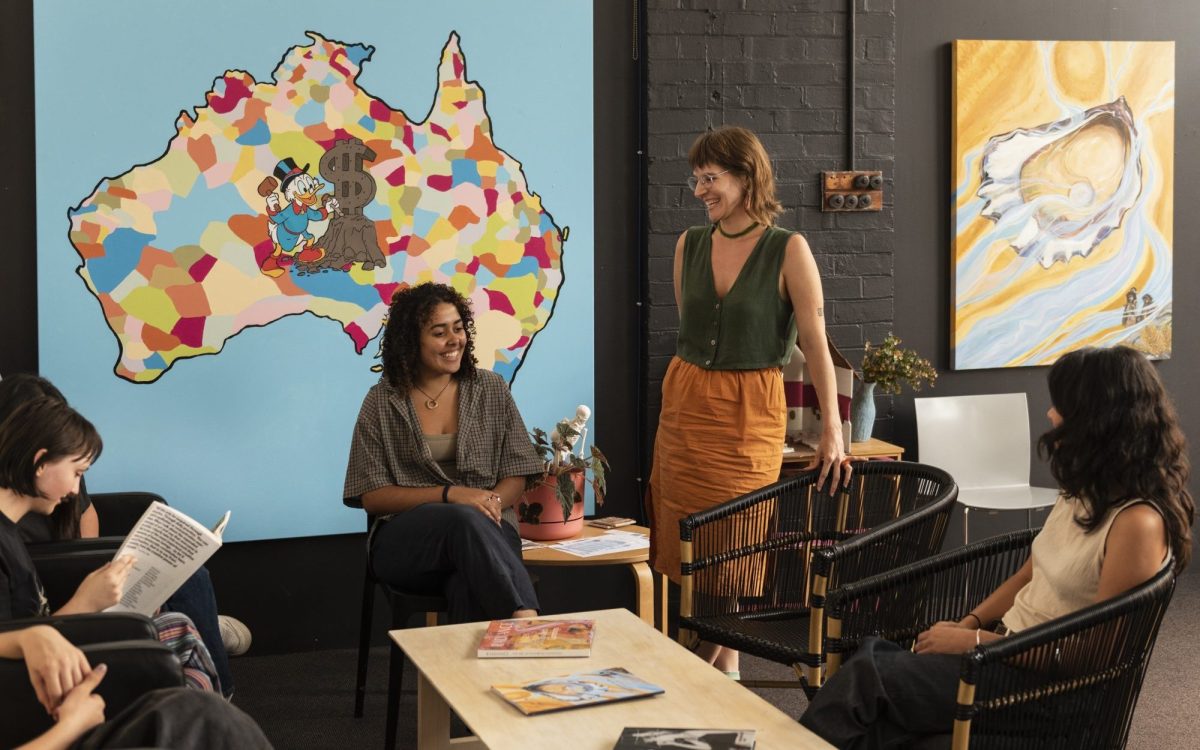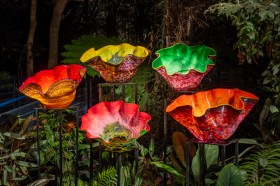The National Art School (NAS) has recently launched its First Peoples Centre, Darani Ngalawada, and Reconciliation Action Plan (RAP), recognising the power and responsibility for education institutions to shift perspectives and channel truth-telling.
NAS alumna and First Peoples Programs Officer, Isabella Kennedy, tells ArtsHub, “There’s been holistic, organisation-wide reassessment of the curriculum and integration of Indigenous perspectives, which is a shift that I think students themselves feel.
“The Reconciliation Action Plan will impact the school’s approach to teaching by promoting awareness, understanding, and respect for First Peoples cultures and histories,” she adds.
Kennedy started as a student at NAS seven years ago and felt first-hand that change and sense of community grow. “Over the years, I have seen NAS evolve into a more inclusive, aware and proactive space, particularly with the opening of the Centre, Darani Ngalawada, and implementation of the art theory course on Contemporary Indigenous Art, developed by Akala Newman and John Waight,” she says.
Part of Kennedy’s responsibility is to work with First Nations students to ensure they get the most out of their degrees.
“I’d like to ensure that students always feel supported and heard, and have a strong sense of self-determination as First Nations artists in this country,” Kennedy continues. “This in part means encouraging wider and deeper understandings of Indigenous peoples and the history of this country through NAS’s teachings and broader program, while continuing to provide and extend tutoring/mentoring programs, resources about ICIP (Indigenous Cultural and Intellectual Property) and copyright education, grant writing support and professional development opportunities.”
While the RAP and Darani Ngalawada are newly established, NAS has been working on its reconciliation journey for the past decade and driving initiatives including the First Peoples Student Grants Scheme, pathways for Year 10 and 11 First Peoples identified students, major survey exhibitions of First Peoples artists and offering the Contemporary Indigenous Art unity of study, available to all NAS students.
First Peoples students, staff and community have been consulted and engaged to name the new First Peoples Centre, Darani Ngalawada, which loosely translates to ‘under the white gum tree we remain’ in the Gadigal language.
In addition, Darani Ngalawada welcomes students from all diverse backgrounds to share that sense of community and have a safe space where they feel supported to thrive or simply unwind, as well as offer “practical workshops on essay writing, study plans and managing workload,” explains Kennedy.
For anyone thinking about studying at NAS, Kennedy says to “go for it!”. She concludes, “One of the things that makes NAS such a special place is its focus on the studio model of learning, and the individual development of each student with small class sizes and more immediate access to staff – which is not really offered anywhere else.”





